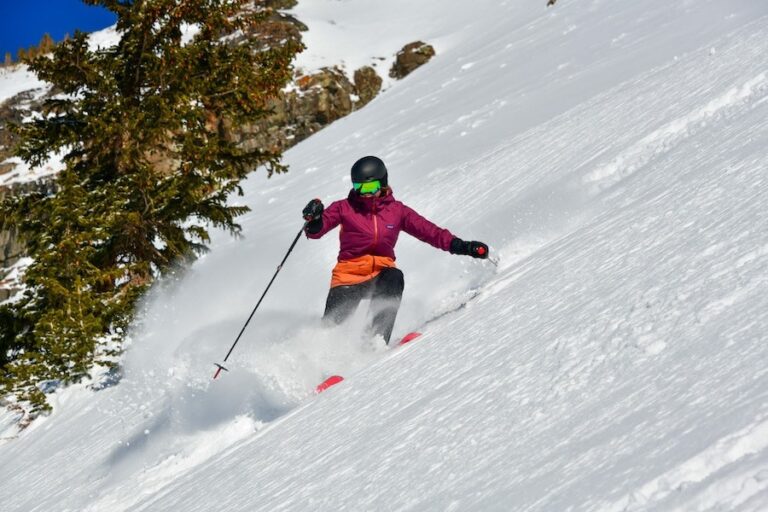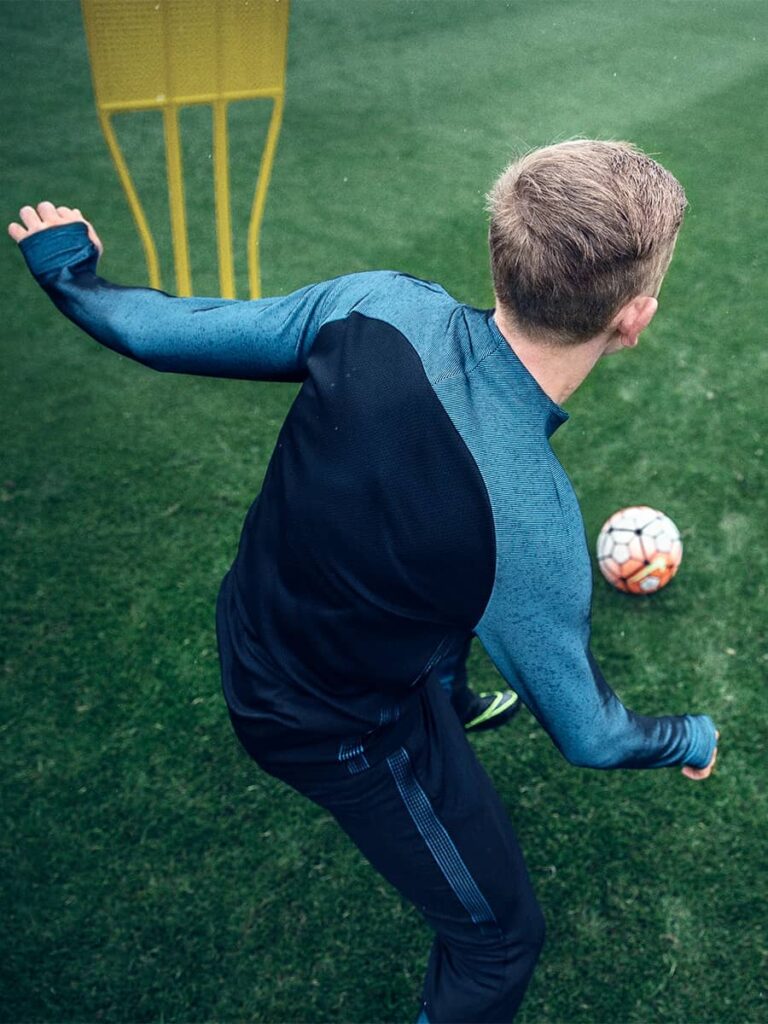The best option to wear under a hard shell ski jacket is a moisture-wicking base layer. When hitting the slopes, it’s crucial to choose the right clothing to stay comfortable and dry.
One essential piece is the hard shell ski jacket, which provides water and wind resistance. However, it’s equally important to consider what to wear underneath for optimal performance. Wearing a moisture-wicking base layer is the ideal choice as it helps regulate body temperature and wicks away sweat, keeping you dry and warm throughout your ski adventure.
This layer should be made of materials like Merino wool or synthetic fabrics, which are designed to move moisture away from the body effectively. So, remember to select a moisture-wicking base layer when preparing to hit the ski slopes with your hard shell ski jacket.
The Importance Of Layering For Skiing
The Importance of Layering for Skiing
Layering is an essential aspect of dressing for skiing, especially when wearing a hard shell ski jacket. Proper layering provides numerous benefits, ensuring comfort and performance on the slopes.
Layering Basics for Skiing:
| Base Layer | Insulating Layer | Outer Layer |
|---|---|---|
| The base layer should be breathable, moisture-wicking, and snug-fitting. | Choose insulating layers that provide warmth without bulkiness, such as fleece or down jackets. | A hard shell ski jacket is crucial as it protects against wind, snow, and moisture. |
By layering properly, you can control your body temperature while skiing. **Base layers** regulate moisture and keep your skin dry, **insulating layers** trap warmth, and the **outer layer** shields you from the elements. Moreover, layering allows you to adjust clothing according to changing weather conditions or activity levels. It’s vital to avoid overdressing as it can cause sweating and discomfort. Instead, focus on lightweight and breathable materials that promote ventilation and mobility.
Now that you understand the significance of layering, ensure you wear appropriate clothing under your hard shell ski jacket for a comfortable and enjoyable skiing experience!

Credit: www.outdoorgearlab.com
Base Layer: The Foundation Of Comfort And Performance
|
Base Layer: The Foundation of Comfort and Performance Choosing the right base layer fabric is crucial when it comes to finding optimal comfort and performance under your hard shell ski jacket. Whether you’re a seasoned skier or a beginner, the right base layer can make a significant difference in your overall experience on the slopes. When selecting a base layer, it’s important to consider the fabric’s moisture-wicking ability, insulation, and breathability. Merino wool is a popular choice for its natural moisture-wicking and insulation properties. It keeps you warm even when wet and helps regulate your body temperature. If you prefer a synthetic option, polyester and polypropylene are excellent choices. They offer high breathability and efficient moisture management, allowing sweat to evaporate quickly, keeping you dry and comfortable throughout your ski session. For the upper body, base layer tops made from these fabrics provide an excellent foundation for layering under your ski jacket. Look for features like flatlock seams to prevent chafing and a snug, but not constricting fit. Similarly, for the lower body, base layer bottoms in the recommended fabrics offer enhanced insulation and moisture management. Opt for a design that fits comfortably under your ski pants and has an elastic waistband for a secure fit. |
Mid Layer: Adding Warmth And Insulation
Making the right choices for your mid layer is crucial when it comes to staying warm and insulated under a hard shell ski jacket. One option to consider is fleece jackets, which provide additional insulation. The soft and lightweight material traps warmth while wicking away moisture, keeping you comfortable. Another option is synthetic jackets, which are designed to mimic the insulating properties of down jackets but without the bulk. These jackets are known for their excellent warmth-to-weight ratio and water-resistant capabilities, making them suitable for ski jacket layering. Lastly, down jackets are a popular choice, known for their exceptional warmth and lightweight nature. They trap heat effectively and are highly compressible, allowing for easy layering under a ski jacket. When selecting a mid layer, consider the different options available and choose the one that best meets your needs for warmth, insulation, and comfort on the slopes.
Insulation Layer: Enhancing Heat Retention
An insulation layer is crucial for enhancing heat retention when wearing a hard shell ski jacket. The insulation layer plays a vital role in keeping you warm and comfortable during your skiing adventures. To understand this layer better, let’s dive into the different insulation accessories that can be worn underneath your ski jacket.
Beanies and hoods: Adding a beanie or a hood can provide additional warmth to your head and ears. These accessories help in trapping heat, ensuring you stay cozy throughout your skiing session.
Neck gaiters and balaclavas: Neck gaiters and balaclavas offer protection to your neck, chin, and face from chilly winds. They serve as a barrier against cold air, while also retaining heat around your neck area.
By incorporating these insulation accessories into your layering system, you can optimize heat retention and ensure a comfortable skiing experience. So, remember to choose the right accessories for your insulation layer to maximize warmth and enjoy your time on the slopes!
Moisture Management: Staying Dry On The Slopes
Moisture management is crucial when it comes to staying dry on the slopes. The right clothing can make all the difference, especially under a hard shell ski jacket. Importance of moisture-wicking fabrics cannot be stressed enough. These fabrics are designed to move sweat away from the skin, keeping you dry and comfortable. Ski socks play a significant role in moisture control, as they are made of moisture-wicking materials that keep your feet dry throughout the day. Additionally, using glove liners made from moisture-wicking fabrics can help manage sweat in your hands, ensuring a comfortable skiing experience. By wearing the right layers under your hard shell ski jacket, you can stay dry and enjoy your time on the slopes without any discomfort.
Accessories For Enhanced Comfort And Protection
Accessories are essential for enhanced comfort and protection when wearing a hard shell ski jacket. Choosing the right ski gloves is crucial to stay warm and maintain dexterity on the slopes. Look for gloves that offer insulation, waterproofing, and a snug fit. Wrist guards are another important accessory for added safety, protecting against fractures and sprains. They provide support and stability to prevent wrist injuries during falls. For extreme skiing conditions, consider wearing additional protective gear such as back protectors, knee pads, and elbow pads. These items safeguard vulnerable areas from impact and ensure a safer skiing experience. With the right accessories, you can enjoy your time on the slopes while staying protected and comfortable.
Final Tips And Considerations
Layering is crucial for staying warm and comfortable under a hard shell ski jacket. To ensure maximum effectiveness, it’s important to follow a specific layering order. Start with a **moisture-wicking base layer** that helps keep you dry by wicking sweat away from your body. Over that, add an **insulating mid-layer** such as a fleece or down jacket to trap heat. The next layer should be a **lightweight, breathable shell layer** to protect you from wind and snow. Remember to **adjust your layers** throughout the day to regulate your body temperature. Zippers, vents, and removable layers can help with this. When it comes to maintenance, make sure to follow the manufacturer’s instructions for **cleaning and caring** for your ski clothing. Regular washing and reapplication of DWR (durable water repellent) coatings can help extend its lifespan. Keep in mind that this information is for informational purposes only and it is always a good idea to seek professional advice before making any decisions.
| Layering Order |
|---|
| 1. Base Layer |
| 2. Insulating Mid-layer |
| 3. Shell Layer |
Make sure to test different layering combinations and **adjust as needed** based on weather conditions and your activity level. By choosing the right layers and taking care of your ski clothing, you can stay warm, dry, and comfortable on the slopes.
Frequently Asked Questions For What To Wear Under Hard Shell Ski Jacket
What Do You Wear Under Ski Shells?
Wear breathable and moisture-wicking base layers under ski shells to stay warm and dry. Layering with fleece or insulating jackets can help regulate body temperature. Remember to choose comfortable and flexible clothing that allows freedom of movement on the slopes.
What Do People Wear Under Ski Jackets?
People typically wear thermal layers, such as long-sleeve tops and leggings, under ski jackets for added warmth and moisture-wicking. These layers help regulate body temperature and provide insulation while skiing or snowboarding.
What Is The Best Jacket To Wear Under A Shell Skiing?
The best jacket to wear under a ski shell is a lightweight, insulated jacket that provides warmth without bulk. Look for one with breathable fabric and moisture-wicking properties to keep you dry and comfortable while skiing.
Can You Wear A Shell Jacket For Skiing?
Yes, a shell jacket can be worn for skiing. It provides protection against snow, wind, and moisture, making it suitable for skiing activities. The lightweight design allows for layering and easy movement on the slopes.
Conclusion
To sum up, choosing the right clothing to wear under a hard shell ski jacket is essential for an enjoyable and comfortable skiing experience. From moisture-wicking base layers to insulating middle layers, each component plays a crucial role in regulating body temperature and providing extra protection against the elements.
Take into consideration the weather conditions, your activity level, and personal preferences when deciding on the most suitable clothing for your next skiing adventure. Dress smart, stay warm, and have a fantastic time on the slopes!






